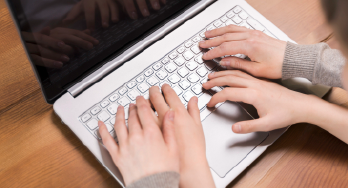
Keyboard familiarization refers to the process of becoming acquainted with the layout, functions, and efficient usage of a keyboard. This process is essential for anyone who uses a computer or other digital device for typing, including students, professionals, and casual users. The goal is to develop the ability to type accurately and quickly without looking at the keys, which can greatly enhance productivity and efficiency.
- QWERTY Layout: Most common and widely used keyboard layout; familiarizing yourself with it is essential.
- Alternative Layouts: Explore layouts like AZERTY, Dvorak, and Colemak if they better suit your typing style or specific needs.
Overview
Understand Keyboard Layout: Familiarize yourself with the standard QWERTY keyboard layout, including the placement of all letters, numbers, symbols, and function keys. Knowing the layout by heart allows for faster and more accurate typing. Additionally, understanding variations such as QWERTZ or AZERTY, if relevant, can be useful for different regions or languages.
Learn the Home Row Keys: The home row keys are the foundation of touch typing. Place your fingers on the ASDF keys for the left hand and JKL; keys for the right hand. Your thumbs should rest on the spacebar. Practicing returning to these keys after each keystroke helps develop muscle memory, making typing more efficient over time.
Master Keyboard Shortcuts: Keyboard shortcuts can significantly speed up navigation and task execution. Learn common shortcuts for your operating system and frequently used applications. For example: Ctrl+C / Cmd+C for copy Ctrl+V / Cmd+V for paste Ctrl+Z / Cmd+Z for undo Alt+Tab / Cmd+Tab for switching between open applications Ctrl+F / Cmd+F for find
Practice with Typing Software: Utilize typing software and online tools to practice and improve your typing skills. Programs like TypingClub, Keybr, and Typing.com offer exercises and drills that focus on different aspects of keyboard familiarization, such as finger placement, speed, and accuracy. Regular practice with these tools helps reinforce learning and build confidence.
Customize Your Keyboard Settings: Adjust your keyboard settings to suit your preferences and needs. This can include changing the key repeat rate, enabling or disabling key sounds, and customizing shortcuts. Many operating systems allow you to remap keys or create custom shortcuts, which can enhance comfort and efficiency. Additionally, consider ergonomic keyboards or key overlays if standard layouts are uncomfortable or unsuitable for your needs.

